Residents of New York State are certainly not strangers to snow. For example, Buffalo receives nearly 95 ½ inches of snow in an average year. Rochester averages 102 inches annually. Watertown receives around 108 inches of snow each year. Syracuse sees almost 128 inches in a typical winter. Old Forge, a hamlet in the Adirondack Mountains, averages over 177 inches of snow annually.
Big snowfall totals are not limited to these select areas, though. Over 60 percent of the state’s land area receives an average of 70 inches or more of snowfall each year. Most of that snow falls in the winter (obviously), but what about spring snowstorms? While many New Yorkers are accustomed to April snowfalls, the accumulation totals in these snow events are typically light.
There have been exceptions to these minor April snowfalls, though. Here are the details of the biggest April snowstorm to hit The Empire State.
The Great April Fool’s Day Snow of 1807
This storm brought the biggest April snowfall totals on record in New York State, but the records are admittedly sparse from this storm. There was no centralized agency to track weather data in 1807. The National Weather Service would not be formed until 63 years after this record storm.
On April 1, 1807, a massive snowstorm walloped a big chunk of the United States. (Remember, there were only 17 states at this point.) A low-pressure system moved out of the Tennessee Valley into the mid-Atlantic states, and the snowfall totals on the north side of the storm were staggering.
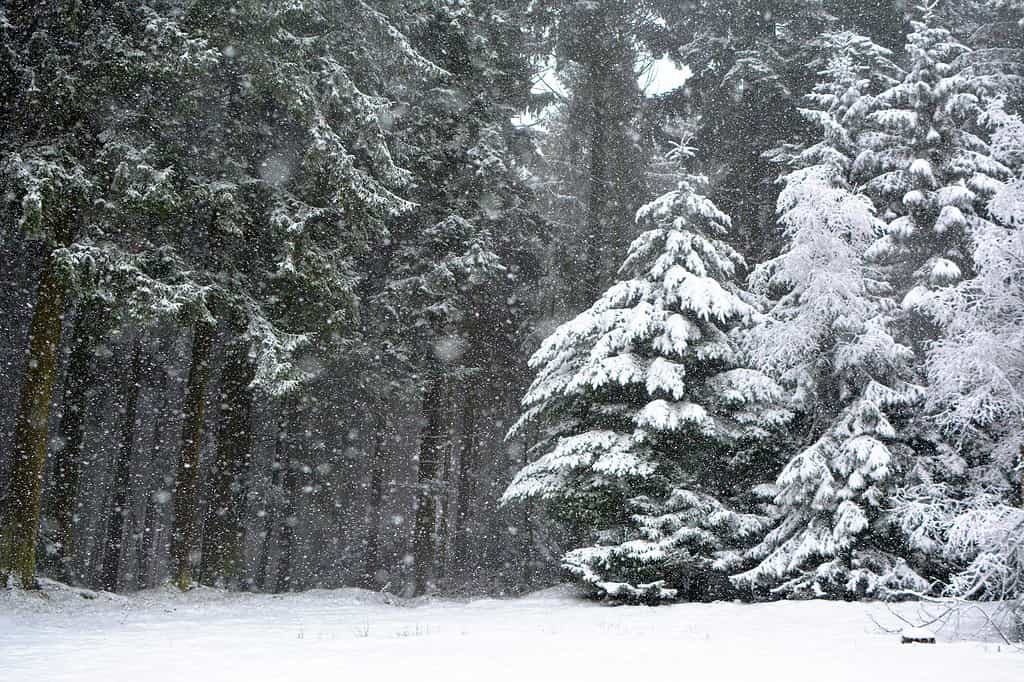
The Great April Fool’s Day Snow of 1807 is still the largest April snowstorm ever in the United States.
©Firn/Shutterstock.com
Parts of Vermont received 60 inches of snow. As for New York State, we don’t have many records from this storm in the early nineteenth century, but we do know that Utica received 54 inches of snow. That would be a massive accumulation from a snowstorm during any time of year, but this storm hit in April!
While few other records have survived from this historic blizzard, it’s a good bet that most of Upstate New York was buried under huge accumulations of snow on that first day of April 1807. We do know that nearly a foot of snow was recorded as far west as Vincennes, Indiana! Talk about a mammoth snowstorm!
The scope of this freak April snowstorm has never been replicated (and most New Yorkers hope it never will be!). It is still the record for the largest April snowstorm ever, not just in New York but in the United States as a whole.
Other Large April Snowstorms
While none will equal that monster snowstorm in 1807, New York State has experienced some other large snowstorms in April.
The April Fool’s Day Blizzard of 1997
While this April Fool’s Day storm couldn’t eclipse the storm on the same date in 1807, this blizzard was still no laughing matter.
A storm moved in from the Ohio Valley on March 30. It was mainly a rain event in eastern New York. On March 31, as the storm slowly moved across the state, the rain changed over to snow. Since the temperatures hovered right at, or just above the freezing point, the snow was very heavy and dense.
When temperatures are well below freezing from the surface up into the atmosphere, snow remains frozen as it falls. If, however, the temperature is at or above 32°F above the ground, snow can partially melt as it falls, giving the snow a significantly higher liquid content. This is why heavy, wet snow falls when temperatures are warmer. Such was the case for this late-season storm in 1997.
As the storm dumped large amounts of this heavy snow on parts of Upstate New York, trees and power lines began to come down. Winds from 30-50 miles per hour made the situation even worse. At least 70,000 New Yorkers in the Albany region alone lost power during the storm.
Snow was falling at around two inches per hour in the bullseye of this storm throughout the day on March 31 and lasted well into the overnight, giving the storm its colloquial name of The April Fool’s Day Blizzard.
Storm Totals
Massachusetts received the brunt of the storm. Within New York State, the heavy snow totals were confined to a relatively small area. New Yorkers who lived in that area, though, were buried under a heavy and very unusual April snow. The deepest snow accumulations in the state were seen in Greene County. East Jewitt measured 37 inches of snow. Gilboa in Schoharie County saw 28 inches. Berne in Albany County received 26 inches, and the capital city of Albany saw over 15 inches of snow.
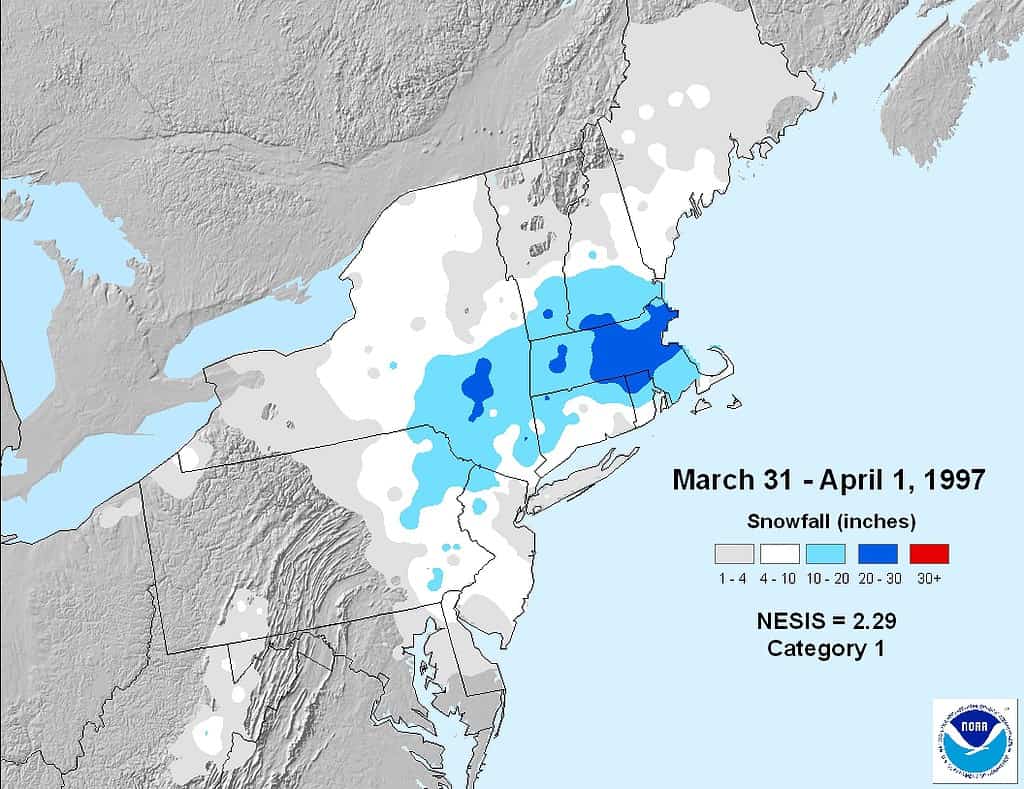
The April Fool’s Day Blizzard 1997 was centered in Massachusetts, but New York certainly did not escape the storm unscathed.
©Transferred by Allwham (talk) 14:51, 16 September 2010 (UTC) / Public domain – License
April 1982 Blizzard
New Yorkers of a certain age will remember April 1982. Easter was less than a week away, but a blizzard roared into the northeast U.S. and brought heavy snow, wind, and even thunder and lightning with it.
Snowfall of 10-20 inches fell from Maine to Pennsylvania. Heavy snow hit New York City, with Central Park measuring over nine inches. Both the Mets and Yankees postponed their home openers due to the blizzard. It was the first blizzard warning ever for New York City in April.
Albany received nearly 17.7 inches of snow, making it the largest April snowstorm ever in the capital. 1981-82 was one of the snowiest winter seasons ever for Albany, with over 97 inches of snow recorded for the season.
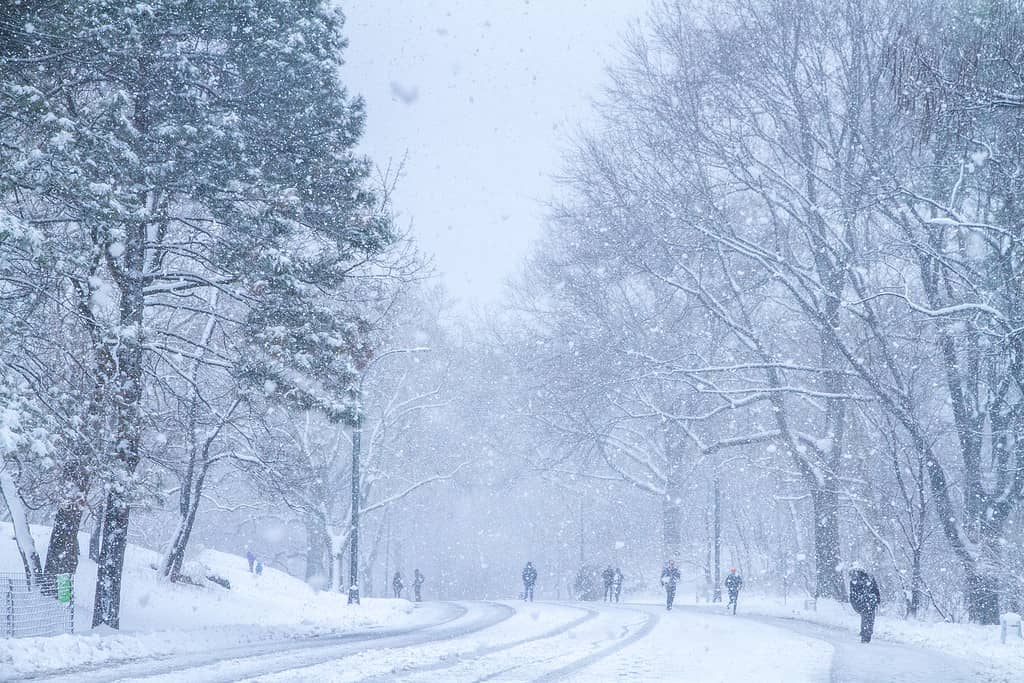
New York City’s Central Park doesn’t see heavy snow very often in April, but it can happen!
©Chen Yuran/Shutterstock.com
The Easter Blizzard of 1915
This monster storm stretched into the southeastern United States. Henderson, North Carolina received a foot of snow. Raleigh saw ten inches of accumulation. These are massive snow totals for a state like North Carolina, especially in April.
Philadelphia saw some of the biggest snow totals from this storm. The City of Brotherly Love was buried under 19 ½ inches of snow in this April blizzard! It certainly caught Philadelphians off guard, especially considering the forecast in the April 3 edition of Philadelphia Inquirer predicted the weather for Easter Sunday (April 4) would be “Unsettled, [with] rain likely.”
The storm reached north into New York City, as well. The city received 10 ½ inches of snow in this storm. Winds upwards of 60 miles per hour whipped through the city as this blizzard unleashed its fury. This picture of the aftermath in the Big Apple shows just how powerful this April blizzard really was.
Like most late-season snowfalls, the snow was wet and heavy. These heavy accumulations brought down trees and power lines.
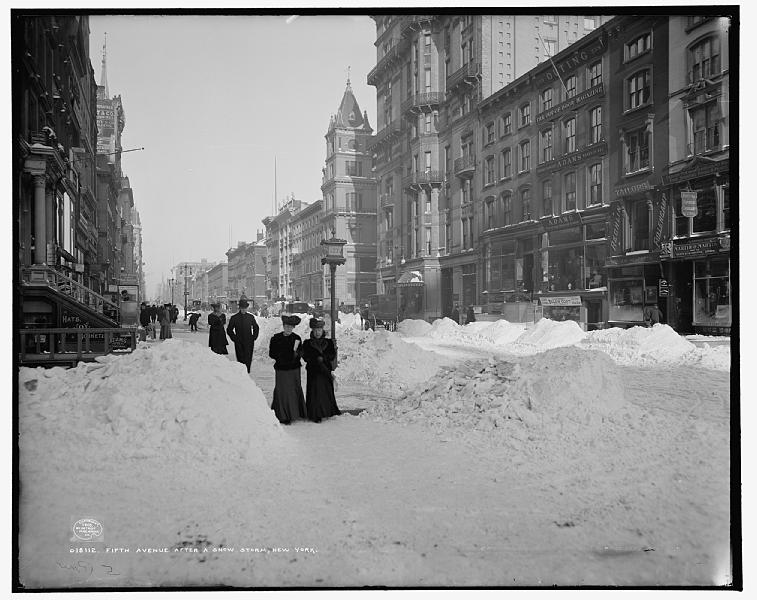
This scene shows Fifth Avenue in New York City after a snowstorm in the early twentieth century.
©Library of Congress / Public domain – License
Typical April Weather in New York
These snowstorms are aberrations. April normally marks the end of the snow season in New York. Even in the state’s snowiest cities, such as Syracuse, April snowfalls are normally very light. Syracuse receives nearly 128 inches of snow each year, but only four inches of that total typically falls in April.
As spring takes hold, the temperatures obviously rise. For instance, the average temperatures in Buffalo on April 1 are 49°F (high) and 32°F (low). By April 30, Buffalo’s average temperatures are 61°F and 42°F.
In Syracuse, the high-temperature averages 50°F on April 1. By the end of the month, the typical high is 64°F. New York City starts the month with an average high of 56°F and ends with a high of 67°F.
New York’s Average Snow Season
The average date for the first measurable snow in New York City is December 14. In the Upstate city of Rochester, the average date for the first measurable snow is November 4.
The average last measurable snowfall was on March 14 in New York City. In Rochester, the average final snowfall comes over a month after New York City’s, occurring on April 15.
The earliest date for the first inch of snowfall in Rochester was on October 11, 1906. In New York City, the earliest first inch of snow fell on October 29, 2012.
The earliest ever “first flake” in Rochester was on September 20, 1956. The earliest snowflakes ever witnessed in New York City fell on October 29, 2011.
The latest date for the first trace of snow in Rochester was November 20, 2018. In New York City, the latest-ever first trace of snow fell on November 22 in both 1946 and 1985.
The longest Rochester ever waited for its first inch of snow was December 28, 2015. The longest wait for that first inch of snow in New York City was in 1998, when the city didn’t see an inch of snow until March 22.
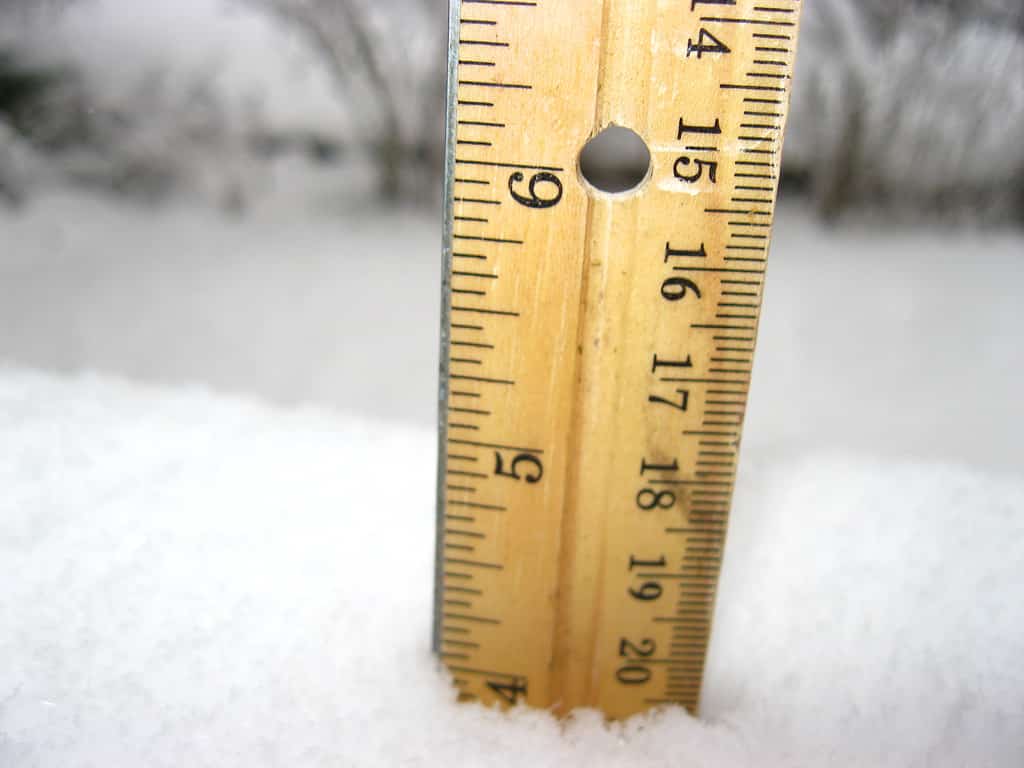
The average final date for measurable snowfall in Rochester is April 15.
©iStock.com/lisad1724
New York Wildlife in Late Season Snowstorms
The animals of New York know how to handle snowstorms, even if they come in April.
Beaver
For instance, the beaver (New York’s official state animal) is quite cold-hardy. Beavers are active throughout the cold winter months, even swimming under the ice of frozen ponds and lakes. Beavers have thick fur that protects them from cold temperatures. It is made up of coarse hair on the outer layer, with finer hairs that mesh together underneath. This helps keep the cold water away from the beaver’s body. An April snowstorm is not going to slow down a beaver.
Black Bear
The black bear is one of New York’s largest mammals. Black bears retreat to dens during the winter. Females with cubs are the last to emerge from their dens, appearing from mid-April to as late as May in New York’s Adirondack Mountains. New cubs may not have even left their den for the first time when these April snowstorms rolled through.
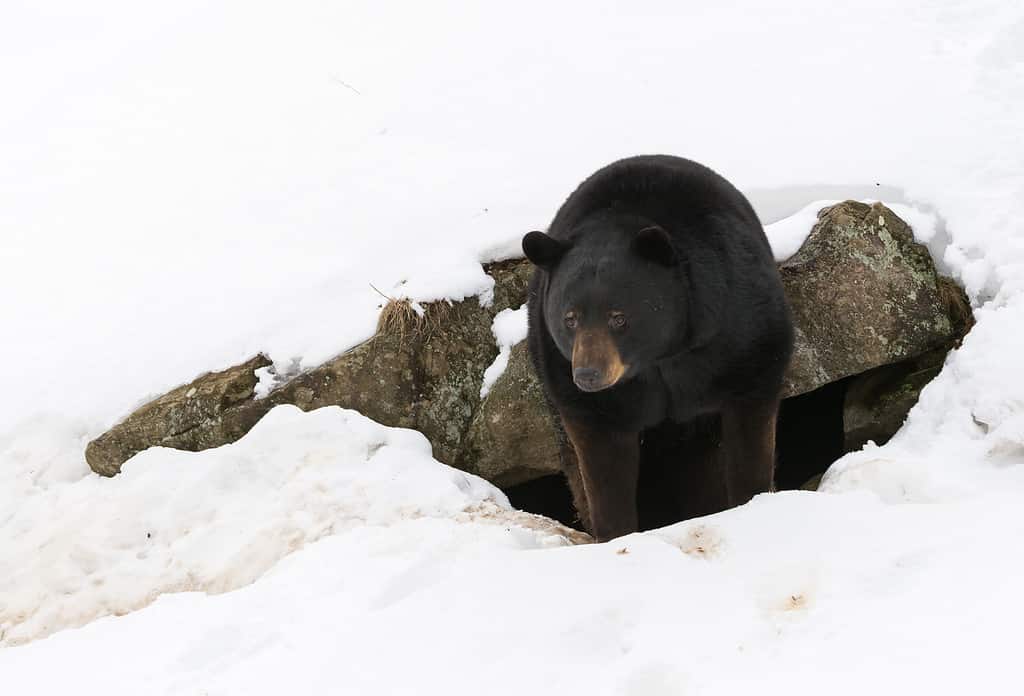
Black bears have dens they use to escape the harsh winter weather.
©iStock.com/Suzan Johnson
Reptiles
What about reptiles in New York? Snakes in Upstate New York often don’t emerge until mid-April or even early May. These snakes would likely still be in their dens during an April snowstorm.
The official state reptile of New York, the common snapping turtle, digs into the muddy bottoms of ponds, marshes, and creeks for the winter. These turtles are usually observed on the banks of New York’s waters beginning in late March, but an April snowstorm would likely send them back to the depths to wait it out.
Eastern Bluebird
New York’s state bird, the eastern bluebird, is one of the first birds to return to the state each spring. These hardy birds can withstand a late spring snowstorm, retreating to their natural nesting habitat in hollow tree cavities if the weather gets too nasty. Many New Yorkers also set up nesting boxes that mimic the birds’ natural nesting habitat. These boxes would be very popular with eastern bluebirds during an April blizzard!
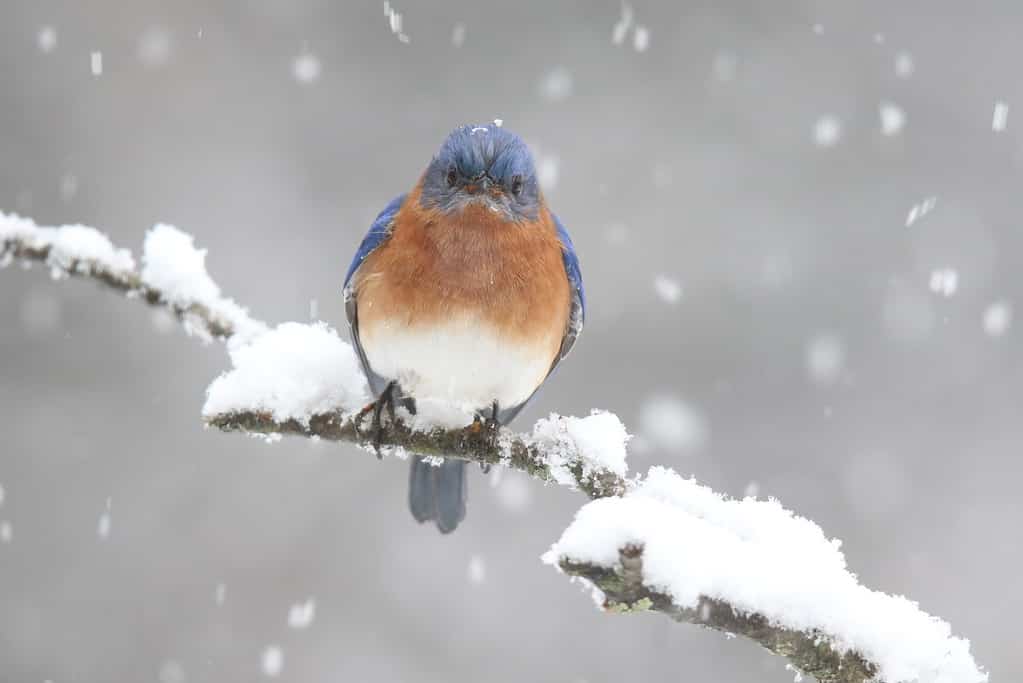
The eastern bluebird is one of the first birds to arrive in New York in the spring. Sometimes they have to deal with an April snowstorm.
©iStock.com/suefeldberg
The photo featured at the top of this post is ©
Thank you for reading! Have some feedback for us? Contact the AZ Animals editorial team.






